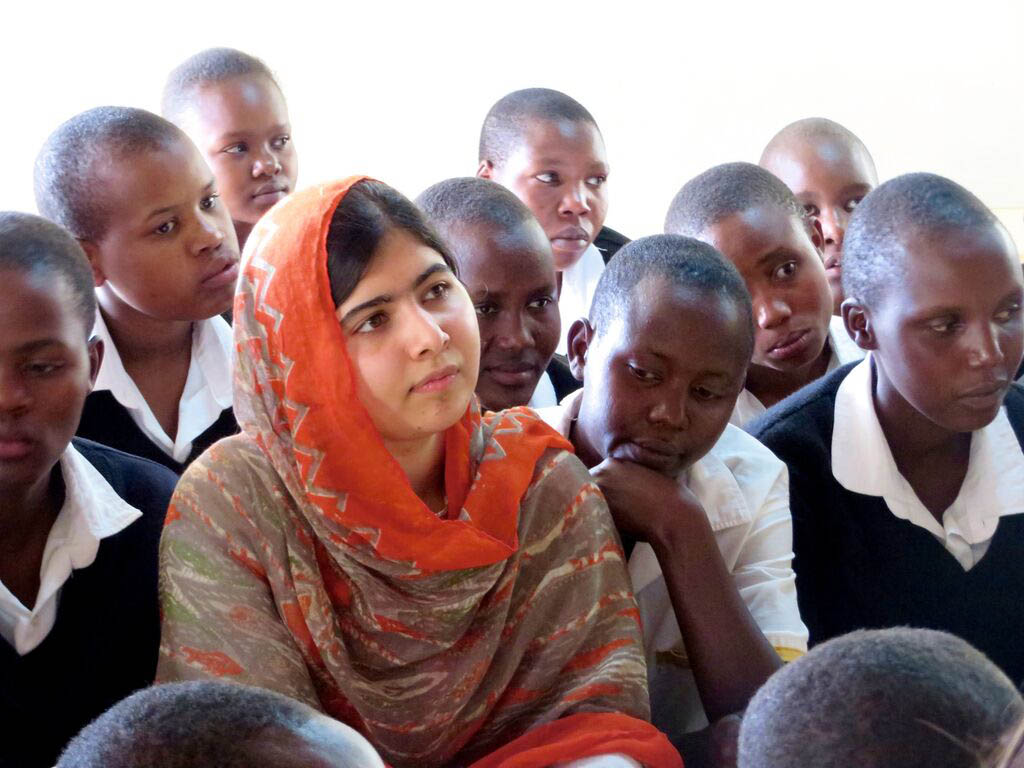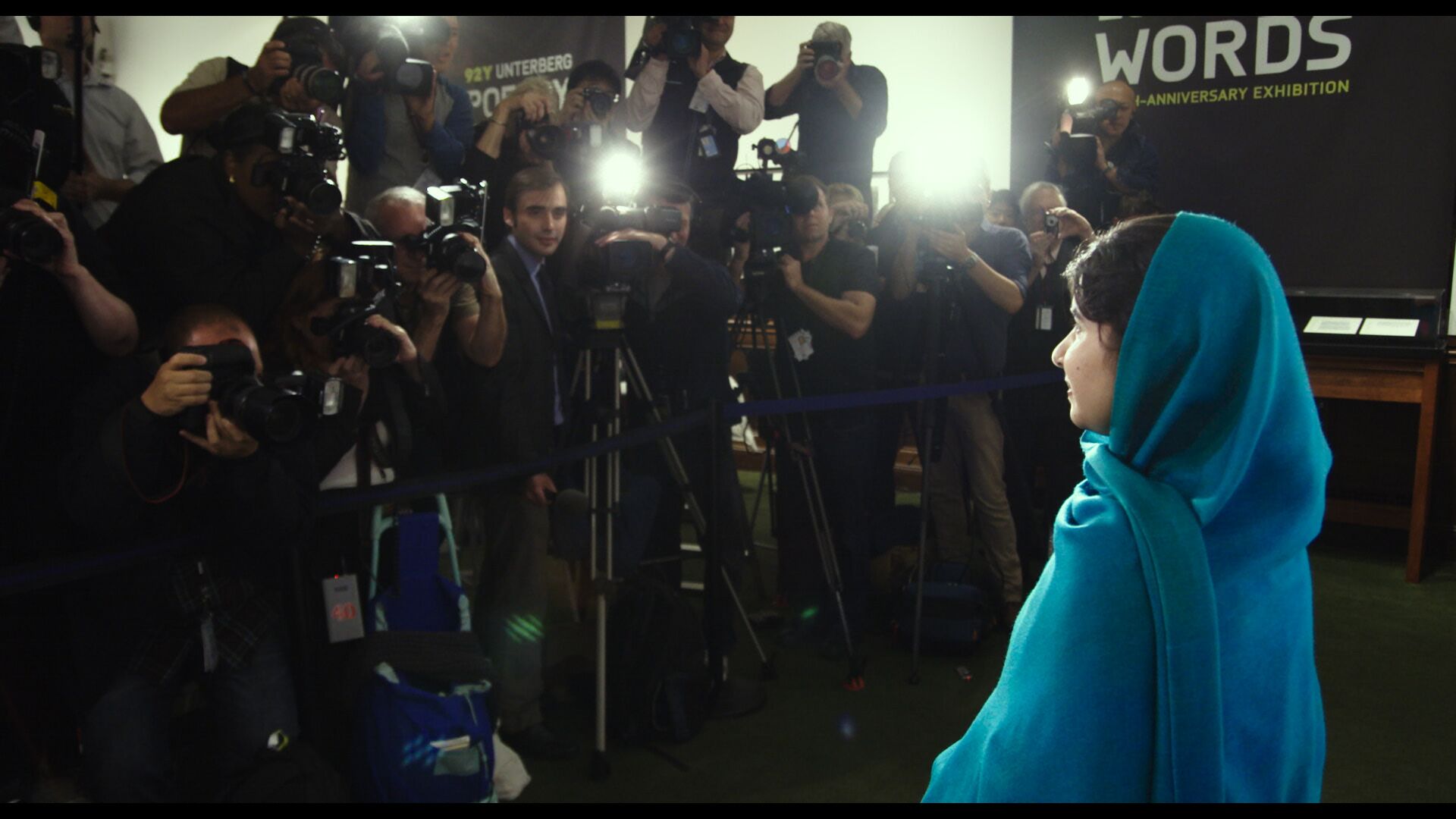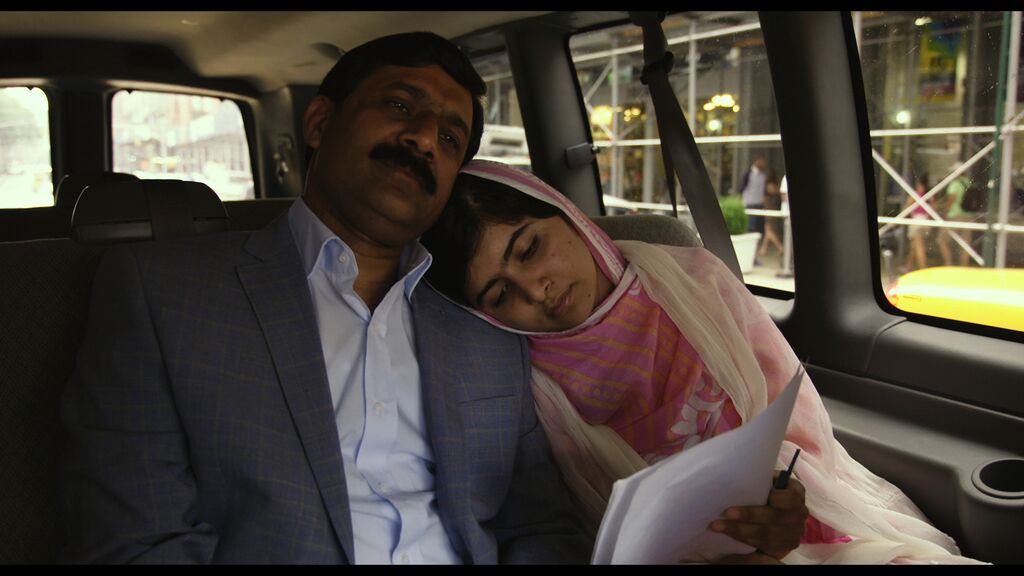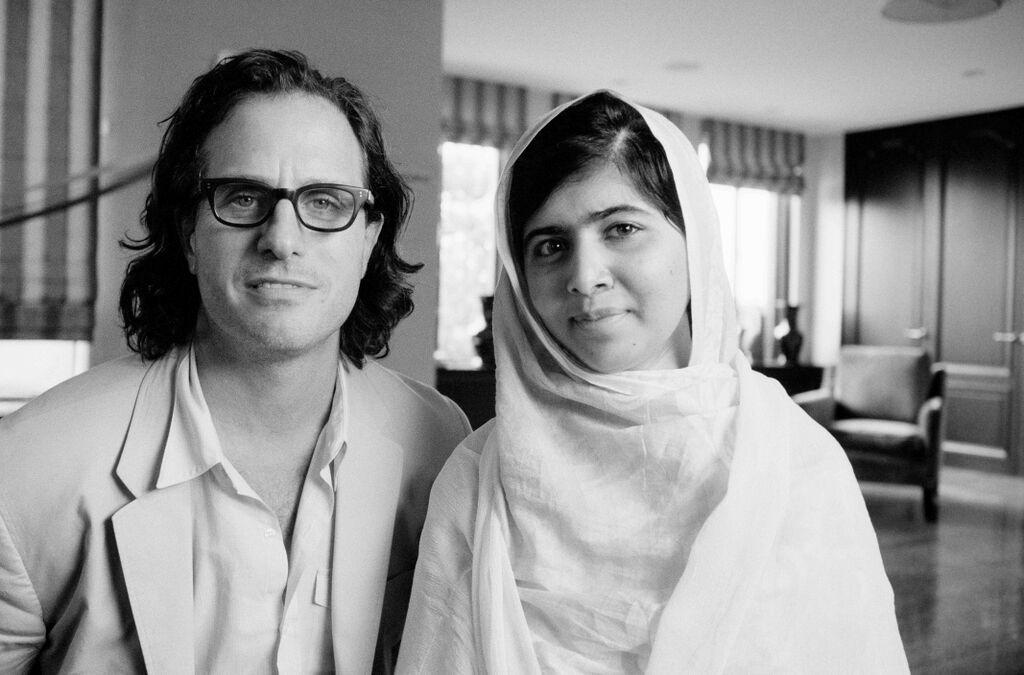
Review: “He Named Me Malala”
Our world is full of irrational, brutal acts and unbelievable consequences, and yet sometimes good can come out of evil. A flying bullet can end a life – or start a bloodless revolution that can change the world.
The film “He named me Malala” documents just such a real life story.
He Named Me Malala
The Girl Behind the Headlines
The world knows the saga of 15-year-old Malala Yousefzai whose school bus in Pakistan’s Swat Valley was stopped by the Taliban, and she was asked for by name – and shot at point-blank range.
Her crime? Being a passionate advocate of girls’ education.
The bullet which ricocheted through her brain could have ended her life, and rightfully perpetuated anger and resentment.
But on Malala’s part there is only forgiveness for her assailants.
The new documentary explores how this is possible as it takes you behind the scenes into the life of this teenager who has won the Nobel Peace Prize, become a world leader and whose name is a synonym for courage.
We have all seen Malala in the news, seen pictures of Malala when she was shot, followed her life as she got the Nobel Peace Prize and embarked on her journey for girls’ education, evolving into a leader before our eyes. The pleasure of the film is that it takes you behind the headlines and captures the day-to-day life of Malala: you see her with her family, engage with her brothers and struggle with her homework, like any ordinary teenager.

Malala’s Journey
The film, directed by Davis Guggenheim and produced by Walter Parkes and Laurie MacDonald, follows the Yousafzai family, Malala, her parents Ziauddin and Toor Pekai, and brothers Khushal and Atal, as they survive the trauma of her shooting to start a new life in the UK. The film also takes you to Nigeria, Kenya, Abu Dhabi and Jordan as Malala becomes a passionate advocate for learning: “One child, one teacher, one book and one pen can change the world.”
Recently the filmmakers were in New York and they sat down with reporters to discuss the film which is showing currently in US markets, and dispelled media myths about Malala and shared some wonderful real life stories about her.
What hooks you in the film is the innovative way animation has been used in a hard as nails format of a documentary. Surprisingly the result is lyrical, capturing the spirit of Malala’s story. It’s like a painting coming to life and captures a young girl’s perspective, juxtaposing it against the harshness of news segments and the horrors of real life.

Swat Valley – Paradise Lost
Losing a homeland is always hard – especially one as beautiful as the Swat Valley. For Malala, it is truly wrenching because she can never go back – the Taliban have sworn to kill her, given the opportunity. But even if she were to go back, she will be going back to a place devoid of its charm and spirit for the Taliban have changed the benign place that was once her home.
So one of the film’s big challenges was how to evoke the Swat Valley of Malala’s memory since it is now a Paradise Lost. As acclaimed documentary filmmaker Davis Guggenheim (An Inconvenient Truth, Waiting for Superman) explains, “The way they spoke, their memories felt like a storybook to me. So I chose to use animation to portray their life before the Taliban in a way they themselves remember it – as something beautiful and charming, like a fairy tale.”
He wanted to retain Malala’s child-like personal memory of the place, described to him in the many interviews he did with her and the challenge was to capture that purity and honesty. In his creative animation, Jason Carpenter has used unorthodox means – digital software to produce the delightful impressions of hand drawings, putting Malala’s memories on the big screen. As real and reel mix in this documentary re-telling, viewers are drawn into a story which has saturated the news – and yet brings you new perspectives about Malala.

A New Kind of Hero for Girls
The film is a must-see for parents and children as it sets a new kind of hero before them, and shows how life-affirming it is to stand up for one’s rights. It’s a great experience for dads and daughters to see together for it captures Yousafzai’s firm beliefs in equality and the rights of the girl child for education.
As Guggenheim observes: “The most extraordinary thing about Malala’s story is her family, their relationships and the choices they made in their lives.”
Malala was named after Malalai, a young Afghani Pashtun warrior girl who was killed for speaking out. Her father gifted her the idea of fearlessness and daring when he gave her that difficult name. But the will to carry it out and live up to her name is all Malala’s – and that is the inspiration audiences can take away from the film.
Malala – the name is so well-known now that no last name needs to be added to know whom we are speaking about. Yet it is a name which stands for so much more now. As Malala says, “I’m hopeful that this name will become a symbol of the fight for rights and for education. Something that inspired me was that after I was attacked in Pakistan, girls raised banners that said ‘I am Malala’. They were saying, ‘I’m here to stand up for my rights.’ So it’s not just the name of one girl. It’s a name that now symbolizes girls speaking out.”
A movie to watch with your family – and do support the Malala Fund.
